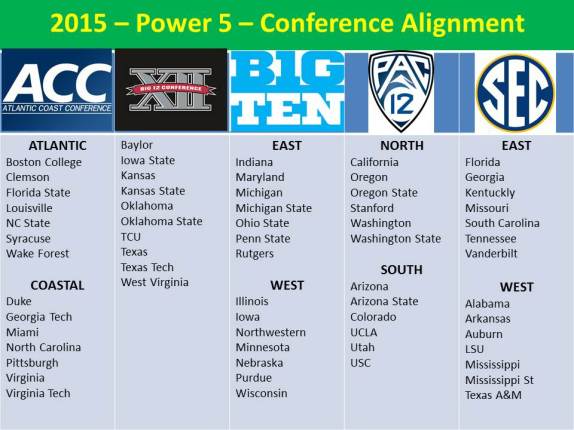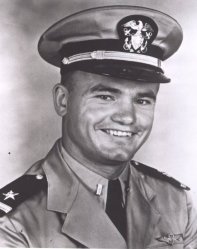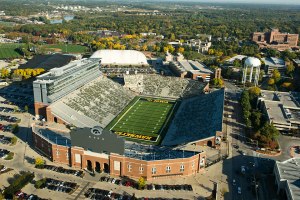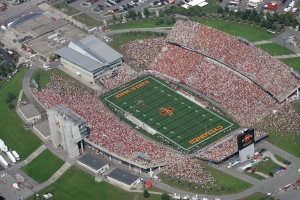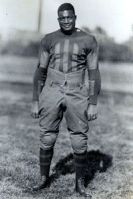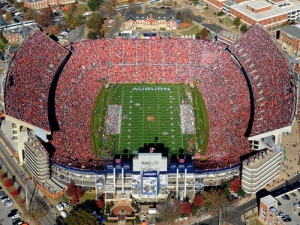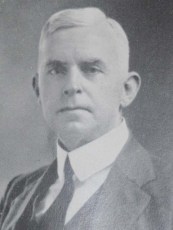Washington
SOD’s One Sided Interview with Chris Petersen
For today’s One-Sided Interview, we head up to the Pacific Northwest where we are not joined by second-year Washington Husky’s Head Coach, Chris Petersen.
SOD: Thank you Coach for not taking time out of your busy schedule as you prepare for your second season at the helm of the Huskies. So, tell me, how are they treating you up in Seattle?
COACH PETERSEN: Not available for comment.
SOD: So, Coach, you enter your second year at Washington with, what appears to be, a rather depleted roster; you lost three All-Americans from a squad that went just 4 – 5 in the Pac 12 last year and you lost your starting QB over the summer when he had to retire due to injuries. What can we expect from the Huskies this year and are you concerned that a step backwards in year two of your time at Washington will, in any way, interfere with your long-term plans?
COACH PETERSEN: Not available for comment.
SOD: Now, Coach, I know you have probably answered this question a thousand times since arriving at Montlake, but, if you would, please take us through it one more time. You were very successful at Boise State for many years and were, year in and year out, touted as the potential next hire at many a prestigious university and many a high-profile program – why Washington and why 2014?
COACH PETERSEN: Not available for comment.
SOD: And now, two years later, you and your Huskies open the 2015 campaign back in Boise against those pesky and ranked Broncos. How do you feel going back to the blue turf but on the other sideline and in the visitor’s locker room?
COACH PETERSEN: Not available for comment.
SOD: Coach, you certainly did have a great run with the Broncos, amassing a 92 – 12 record, winning 5 bowl games, including a couple very high profile wins and keeping the Broncos high up in the rankings most years. But, you were not the first coach to achieve success at Boise State. Your recent Boise State predecessors moved on to quote/unquote “better jobs” with rather pedestrian results. Why should we believe it will be any different with you at Washington?
COACH PETERSEN: Not available for comment.
SOD: And tell us, Coach, just how different is it coaching in the Pac 12? Your Husky football team plays in a very competitive conference and division. You have tough opponents, week-in and week-out, with little margin for error. You’ve got Oregon and Stanford rooted at the top of your division, two programs that give no signs of having down years ahead of them – what will it take to put the Huskies back on top again? How soon can we expect Washington to make a run at a spot in the FBS Playoffs?
COACH PETERSEN: Not available for comment.
SOD: And, if you would Coach, tell us a little bit about how different the recruiting process is, coaching at a Pac 12 school as opposed to how you went about recruiting at Boise State. I’ve been hearing the term that you like to recruit, “Our Kind’a Guy” – what exactly does that mean and what is your kind’a guy?
COACH PETERSEN: Not available for comment.
SOD: Coach, thank you once again for not joining us today and best of luck with your Huskies in 2015 and beyond. Washington certainly has one of the best venues to watch a college football game and we would love to see you and them, once again, at the top of the polls.
COACH PETERSEN: Not available for comment.
SOD: And that concludes the fifth installment in our One-Sided Interviews. If you have any thoughts on One-Sided Interviews you would like to read about in future blogs, please let us know. And, until next time, if you cannot spike the football … then, spike the lemonade.
Trivia Tuesday – Power 5 Conferences
In recent years, there has been a lot of shuffling of College Football Conferences. And, if you believe Some Other Dude, there is more yet to come as we advance upon the age of the Mega-Conferences. But, SOD wonders, how well do you know the history of the current Power 5 Conferences?
THE TRIVIA CHALLENGE
Name the original teams in each of the current Power 5 Conferences.
THE BUFFER ZONE
THE ANSWERS
The Atlantic Coast Conference. Even though we appear to be headed to 16 team Mega-Conferences, back in history there was an even mega-er conference; the Southern Conference. The Southern Conference, at one time, consisted of 23 teams and eventually splintered into other, smaller conferences. One of those splinter conferences was the ACC which officially formed as a conference in 1953. The 7 charter members of the ACC were: Clemson, Duke, Maryland, North Carolina, North Carolina State, South Carolina and Wake Forest. Only South Carolina no longer calls the ACC home as they eventually joined the other splinter conference with former Southern Conference brethren. Link to information source.
The Big 12. The history of the Big 12 is a little more convoluted than that of the other conferences. The Big 12 itself wasn’t formed until 1994 when teams from the Big 8 merged with teams from the Southwest Conference. The Big 8 Conference was originally chartered in 1907 as the Missouri Valley Intercollegiate Athletic Association and eventually became known as the Big 6 and then grew up to become the Big 8. The original members of this conference were: Iowa (two-timing with the Big Ten), Kansas, Missouri, Nebraska and Washington University in St. Louis. Only Kansas remains as a current member of The Big 12. Link to information source. The Southwest Conference was first formed in 1912, consisting of: Arkansas, Baylor, Oklahoma, Oklahoma State, Rice, Texas and Texas A&M. Baylor, Oklahoma, Oklahoma State and Texas remain as current members of the Big 12. Link to information source.
The Big Ten. The name “The Big Ten” was actually not officially incorporated until 1987, but the conference referred to as the Big Ten has been around since 1905. The original conference was made up of 7 teams in what was known as the “Intercollegiate Conference Athletic Association”. In 1917, when the conference had expanded to 10 teams, it was labeled the “Big Ten” by members of the media. The original members of this so-called Big Ten Conference were: Indiana, Illinois, Iowa, Michigan, Minnesota, Northwestern, Ohio State, Purdue, University of Chicago and Wisconsin. Only the University of Chicago is not a member of that conference today. Link to information source.
The Pac 12. The Pac 12 Conference started off as a little seedling conference that eventually grew up into the Pac 12. Forming in 1916 as the Pacific Coast Conference, its original members stood at only 4 schools: California, Oregon, Oregon Agricultural College (later known as Oregon State) and Washington. All four schools still remain in the conference today. Interestingly, Idaho and Montana were one time members of this conference and the conference was disbanded and re-assembled in 1959 due to a pay-for-play scandal. The re-formed conference was called the Athletic Association of Western Universities, commonly known as the Big 5. After growing once again, the conference started being referred to as the Pacific 8 in 1964 and officially became the Pacific 8 in 1968, the Pac 10 in 1978 and the Pac 12 in 2011. Link to information source.
The SEC. The SEC preceded the ACC in splintering away from the huge Southern Conference when 13 schools left in 1932 to form their own conference. The 13 schools that made up the first version of the Southeastern Conference were: Alabama, Auburn, Florida, Georgia, Georgia Tech, Kentucky, LSU, Ole Miss, Mississippi State, Sewanee (University of the South), Tennessee, Tulane and Vanderbilt. Georgia Tech now resides in the ACC; Tulane, although still an FBS school is no longer a member of a Power 5 Conference; and, Sewanee, after having decided to de-emphasize sports in 1940, currently competes in Division III athletics. Link to information source.
Greatest College Football Games Never Played
As we sit in the off season and wait for August to roll around again, SOD likes to look ahead at the upcoming schedules. In so doing, I was wondering, “What are some great football match-ups that haven’t yet occurred?” What are the greatest games never played?
To answer this question, SOD looked at the schools with the all-time winningest records and identified which of these schools have never played each other.
Like all of SOD’s, unscientific research, the results are only as good as my internet search skills allow – so, my findings may contain some erroneous data, but, the following table lists those match-ups of current FBS schools listed in the top 30 of all-time winningest programs that have not matched up against each other, as best as I could discover.
Many of these unplayed games make geographic sense, but a few of them are surprising and, almost all of them, would make great match-ups in future schedules.
A few observations:
Probably the most surprising games not yet played are: Tennessee v West Virginia and Penn State v Virginia Tech. It is also surprising to see that Oklahoma has never played Georgia and Arkansas has never gone up against Clemson. All of these non-games should be played!
The one team that shows up most often on this list is Washington. The Huskies have not yet matched up against 8 of the 23 other teams on top of the list of winningest programs. I know that the Dawgs are tucked away in the Pacific Northwest corner of the US and many of these teams are Eastern and Southern schools, but, come on Dawgs, you need to get out more!
SOD looked over this list and tried to determine which game would most likely be a National Championship Game? I’d probably have to go with Oklahoma v Georgia.
As we venture deeper into the new world order of the FBS playoff and schedule strength starts to play a bigger and bigger role in who gets selected to participate in the playoffs, SOD believes that we will see fewer and fewer cupcakes on FBS teams’ schedules. As a result, the list of unplayed games shown above would be a great place to start in finding non-conference games to play. Really – which one of those games would you not want to see played and have your team go up against some patsy instead?
Oh well, a guy can dream can’t he?
2015 Week 1 – Too Soon?
So, here it is, February 12; Week 1 of the 2015 College Football Season is still over 6 months away, and, I wonder, is it too early to start looking forward to the Week 1 schedule? … HELL, NO!
Besides, what else do good, respectable, young college football fans have to do? Well, I might not be good, respectable or young, but I am a college football fan, so, here goes – the look ahead to Week 1.
The 2015 FBS College Football Schedule kicks off on a Thursday Night, September 3, with a couple intriguing match-ups.
The Carolinas, North and South will tangle at a, somewhat, neutral site, Bank of America Stadium, in Charlotte, NC, to get things started. Both teams are trying to get back into the thick of things in their respective conferences and this game should be a good indication of which team is poised to make a move. Steve Spurrier will be debuting a new signal caller in this game and the Tar Heel defense is a tough first-game assignment. The Tar Heels are currently ranked #35 in the ESPN PreSeason FPI Rankings and the Gamecocks weigh in at #40.
Jim Harbaugh will debut as the Head Coach for Michigan in Utah as the Wolverines try to pay back the Utes for embarrassing them in the Big House in 2014. A pretty tough assignment, to go on the road for your first game with a new program, and Wolverine expectations will be through the roof, but the Utes will be in no mode to be gracious hosts. An interesting match-up, indeed. Michigan currently stands at #28 in the ESPN PreSeason FPI Rankings while the Utes hold down the 38th spot.
After a nice double-dose of intriguing games on an opening Thursday night, football fans will get a couple of days rest to prepare themselves for the first Saturday of the new season and a handful of additional games that will merit some attention.
After leaving the program in 2013, Chris Petersen will head back to Boise State with his new team, the Washington Huskies. The Broncos will be anxious to show that his old, non-Power 5 program is still better than his new, PAC-12 squad. There will be a new gunslinger for the Broncos tossing footballs on the blue turf, but Boise State returns a good team coming off of their Fiesta Bowl victory over another PAC-12 team in #10 Arizona. Boise State is likely to be ranked in the Top 25 and Washington is likely to be one of those, “also receiving votes” teams coming into the game. Both teams will enter with a chip on their shoulder and one team will have it knocked off. Boise State is currently ranked #31 in the ESPN PreSeason FPI Rankings and Washington sits at #46.
The first Saturday also has Virginia travelling coast to coast to complete the home and home series against UCLA. The Cavaliers played a close, but losing game against the Briuns in their Virginia home in 2014. Going out west, however, the Cavaliers will be facing a Briuns’ squad that has a new QB at the helm, replacing the early departed Brett Hundley. It’s not easy going coast to coast for your first game of the season, as UCLA discovered last year; it will be interesting to see how this game kicks off the 2015 season for both teams. UCLA is currently ranked #12 in the ESPN PreSeason FPI Rankings while Virginia is ranked #56.
In what might be dubbed the Brainiac Bowl, the B1G Ten’s academic leader, Northwestern will make a trip out west to meet the PAC-12’s academic leader, Stanford. The Cardinal is likely to be a heavy favorite in this game, but an interesting matchup nonetheless between two of the finer educational institutions that happen to also field pretty good football teams. Stanford sits at #17 in the ESPN PreSeason FPI Rankings and Northwestern is down at #68.
The Badgers of Wisconsin are proving that they like to start off their seasons with a bang and do not shy away from tough scheduling challenges. Last year the Badgers started things off in a high-profile game against LSU, blowing a big lead in eventually losing the game, and will start off the 2015 season back in SEC country against the reigning SEC Champs in Alabama. The Crimson Tide does turnover a large portion of their starting lineup, but this seems to be something that Alabama does well. A good test for both teams to start the new year and a game that is sure to get most of the first Week spotlight going into the season. Alabama is currently ranked #2 in the ESPN PreSeason FPI Rankings and the Badgers fall in at #36. But, preseason polls are likely to have both teams in the Top 25.
In another intriguing contest with an SEC powerhouse, Louisville squares off against Auburn in the Georgia Dome. The Tigers will be replacing Nick Marshall at QB while Louisville brings in an experienced Will Gardner. Another early season measuring stick for two programs poised to make a run at their respective conference championships. Auburn is currently ranked #18 in the ESPN PreSeason FPI Rankings and the Cardinals sit at #44.
In a contest between two of the better teams in two of the best conferences, Arizona State and Texas A&M match up in NRG Stadium in Houston. This is another good match-up that could be an early indication of which team is ready to vie for a top spot in their respective conferences. Texas A&M is currently ranked #11 in the ESPN PreSeason FPI Rankings and Arizona State is a respectable #20. All in all, a pretty good Week 1 for the SEC West top teams to send a signal to the rest of the college football world that they are still the cream of the crop.
And, the first week of the season is capped off with a Monday Night affair between the Buckeyes of Ohio State and the Virginia Tech Hokies. Last year, the Hokies hung an albatross around the Buckeyes’ necks almost big enough to keep them out of the playoffs. Ohio State overcame that “bad” loss on their journey to the National Championship, but will be looking to avenge the loss in Blacksburg. One thing for sure is – whichever QB is under center for the Buckeyes this time, it will be one with a lot more experience than JT Barrett had going into last years’ game. Ohio State currently sits atop of the ESPN PreSeason FPI Rankings at #1 while Virginia Tech is ranked #25.
So, yes, it is over half a year away, but the intrigue these games promise will only grow brighter and brighter as the season gets closer and closer. There will also be some interest in games that appear less fairly matched as the nation watches to see how new QBs perform under center – like the Eastern Washington vs Oregon game in which Oregon’s new QB just might be Eastern’s old QB; and, the Texas State vs Florida State game in which famous Jameis will likely be watching from an NFL camp somewhere.
For now, however, its nearing time for college football fans to go into their summer hibernation, dreaming of the sounds of whistles to ring in an interesting Week 1.
College Football National Champions Trivia
Most of us know that Oregon participated in the National Championship Game in January seeking their first ever College Football National Championship title. Unfortunately for Duck fans, they are still seeking their first title. But, this got SOD to thinking – What was the last team to win a National Championship for the first time? Researching this answer led to the discovery of some other interesting (or, at least, SOD thinks they are interesting) facts. So, SOD thought he would see if any of you wise-crackers and college football aficionados know the answers to these National Championship related questions. All of these questions are based on AP/Coaches/USA T/ESPN Poll Rankings since 1936 (as recognized by the NCAA), the BCS Championship format from 1998 – 2013, and the Playoff Championship format for the 2014 season:
Q1. When was the last time that a Division I team won a National Championship for the 1st time?
Q2. When was the last time that a Division I team won a National Championship for their one and only time?
Q3. Of the teams that have won 4 or more National Championships since 1936, which team has gone the longest since their last title?
Q4. Of all the teams that have won a National Championship since the start of the AP Polls in 1936, which team has gone the longest without winning their 2nd Championship?
Q5. Which team expands the longest period of time between their first Championship and their most recent Championship (1936 – present)?
Q6. Which team that has won 2 or more National Championships had endured the longest gap between two Championships?
Q7. Of all the teams that have won a National Championship since 1936, only 3 of them do not currently play in a Power 5 Conference – name those three teams.
Q8. Who was crowned the 1st National Champion by the AP Poll in 1936?
Q9. What was the last team to win the National Championship prior to the start of the BCS? HINT: There were two-champions – It was a split title.
Q10. Who won the first BCS Championship Game? And, who did they beat?
ANSWERS
A1. 1996 – Florida. Florida won its 1st National Championship in 1996. Every team that has won the National Championship since 1996, including Florida’s two additional Championships, had won a previous Championship earlier than 1996.
A2. 1991 – Washington. The Huskies won a share of the National Championship with Miami-FL for its only National Championship in 1991. Washington was named Champion in the Coaches Poll and Miami was #1 in the AP Poll.
A3. Minnesota. Minnesota has 4 National Championships to its name, but hasn’t won one since 1960. There are 8 other teams with 4 or more championships, and they have all won at least one of them since 1960.
A4. TCU. TCU won the National Championship in 1938 and is still looking for the next one.
A5. Ohio State. Having won their 1st National Championship in 1942 and their most recent Championship in 2014, the Buckeyes expand 72 years between 1st and most recent.
A6. Auburn. The 53 years between Auburn’s National Championship in 1957 and the one they won in 2010 represents the longest gap between Championships of any Division I team.
A7. Notre Dame (8 Championships), Army (2), and BYU (1). All three teams are currently Independent football teams.
A8. Minnesota. The Golden Gophers were also recognized as the National Champions by the NCAA for the two years prior to the existence of the AP Poll (1934 and 1935) as determined by the polls then recognized by the NCAA.
A9. Michigan and Nebraska. In 1997, Michigan was crowned Champion in the AP Poll; Nebraska was ranked #1 in the USA/ESPN Poll.
A10. Tennessee / Florida State. Tennessee triumphed over Florida State, 23-16, in the first BCS Game held on January 4, 1999, ending the 1998 College Football season.
FBS Stadiums Named After Former Team Players
When SOD was a young boy (yes, I once was a young boy) I read and became enamored with the story about Nile Kinnick. Nile was a football player who attended the University of Iowa after not making the football squad at Minnesota. Nile helped the Hawkeyes rise to prominence in the Big Ten culminating with a Heisman Trophy winning senior year in 1939. Nile was also an accomplished student and is known for giving one of the most notable Heisman acceptance speeches of all time. Following his Heisman speech, one sports writer was moved to write, “The country is OK as long as it produces Nile Kinnicks. The football part is incidental.”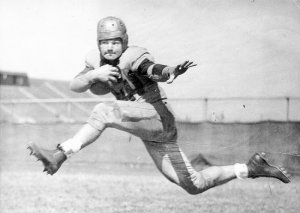
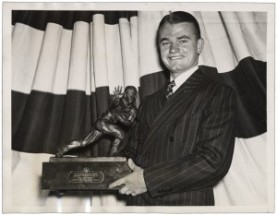
Following graduation, Nile passed on his chance to play in the NFL opting, instead, to continue his education in law at Iowa. Nile then joined the Naval Air Corps Reserve and reported for duty just three days before the Japanese attack on Pearl Harbor. While flying on an aircraft carrier training mission off the coast of Venezuela on June 2, 1943, Nile experienced engine trouble and tried an emergency landing in the water as opposed to on the deck of the USS Lexington so as not to endanger the lives of the men on board that ship. Nile’s body was never recovered. He was 24.
Nile Kinnick’s likeness now adorns the face of the coin tossed at the start of every Big Ten football game and, in 1972, the University of Iowa named their football stadium after this fallen hero – the only Heisman Award Winner from the university.
The story of Nile Kinnick stuck with me throughout the years, so I was always aware of the legacy behind Iowa’s Nile Kinnick Stadium. But, I wondered, how many other FBS stadiums are named after former football players for their university?
So, through very unscientific research, SOD decided to find out. Here is the result of my research, relying solely on my internet searching skills – so, take the accuracy in what I report as you will.
I tried looking into the official name for every FBS stadium. Many of the stadium’s official name also includes a name for the field itself, such as So-and-So Field at Such-and-Such Stadium. In the cases where either or both contained a person’s name, I tried to research the background on both names.
A relatively large number of fields/stadiums are named after accomplished coaches and or Athletic Directors from those schools. Also, a significant number of the fields/stadiums are, of course, named after a prominent benefactor who helped fund the project to either build or significantly renovate the facilities. And, as a sign of the changing world we live in, there are also a number of fields/stadiums named after companies or organizations that paid large sums of money for the naming rights. I know this is a sign of the times (pun unintended) but SOD is not a fan of this unfortunate trend.
SOD did find, however, a few fields/stadiums that are, like Kinnick Stadium, named after a former football player. Here is what SOD found:
Capital One Field at Byrd Stadium – University of Maryland. 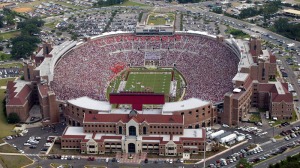
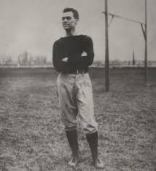
Byrd Stadium is named after Harry Clifton “Curley” Byrd who played football (amongst other varsity sports) at the Maryland Agricultural College (now, the University of Maryland) from 1905 – 1908. The stadium, however, does not bear Byrd’s name because of his football prowess, but because Curley Byrd became much more than that at Maryland throughout his illustrious career. After continuing his education, and athletic careers (there were no eligibility limits at that time) elsewhere, Byrd returned to Maryland where he taught English and History while also coaching football, baseball and track. Byrd eventually assumed the position of Athletic Director and, later, became the President of the University. Interestingly enough, while serving as President, Byrd hired Paul “Bear” Bryant to his first Head Coaching position. But, the two men did not get along and Coach Bryant moved on to make a name for himself elsewhere. In the final tally, Curly Byrd had coached the Maryland football team from 1911 – 1934 with a record of 119-82-15; coached the Maryland baseball team from 1913 – 1923, amassing a record of 88-73-4; and, served as President from 1936 – 1954.
Davis Wade Stadium at Scott Field – Mississippi State University. 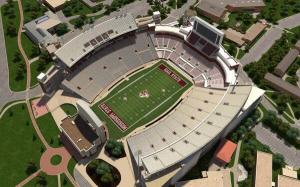
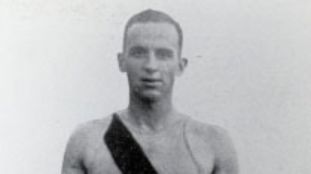
The official name of the football facility at Mississippi State is Davis Wade Stadium at Scott Field. The “Davis Wade Stadium” part of the name is in honor of longtime MSU supporter Floyd Davis Wade who helped finance a large expansion to the stadium. But, the “Scott Field” part of the name is named after one of the University’s football stars and Olympic athlete, Don Magruder Scott. Scott starred on the MSU football team from 1915-1916 prior to participating in the 1920 Summer Olympics, running the 800 meters event, and the 1924 Olympics in the modern pentathlon.
Jack Trice Stadium – Iowa State University.
Jack Trice was a football player for the Iowa State Cyclones in 1923. Trice was Iowa State’s first African American athlete. During a football game played on October 6, 1923 against the Minnesota Golden Gophers, Trice broke his collarbone early in the contest but insisted he was okay and returned to the game. Later in the game, Trice was removed, once again, and, this time, sent to a Minneapolis hospital. Trice was bandaged up and sent back to Ames, Iowa with the rest of the football team. Two days later, the young man died from hemorrhaged lungs and internal bleeding resulting from his football injuries. There were cries of foul play from some of the Iowa State players, claiming Trice was targeted throughout the game because of his skin color, but no official investigation was undertaken. In 1975 the football playing field was named in honor of Jack Trice. The facility itself was known as Cyclone Stadium until 1997 when it was renamed Jack Trice Stadium due to persistent requests from the student body. Jack Trice Stadium is the only FBS Stadium named for an African American individual.
Jordan-Hare Stadium – Auburn University.
The “Jordan” part of Jordan-Hare Stadium is named after the winningest coach at Auburn, Ralph “Shug” Jordan; and, the “Hare” part is named after Cliff Hare, a member of Auburn’s first football team who then went on to become the Dean of the Auburn University School of Chemistry and President of the Southern Conference. Hare began his long-time relationship with Auburn back in 1888 when the institution was known as Alabama Polytechnic Institute (API). Not only is Clifford Hare honored by sharing the name of the football stadium, but his legacy is remembered through the Clifford Hare Award, the highest honor an Auburn athlete can achieve. The Clifford Hare Award is inscribed with his quote; “Athletics makes men strong, study makes men wise, and character makes men great.”
James Gamble Nippert Memorial Stadium – University of Cincinnati. 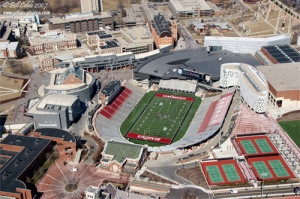
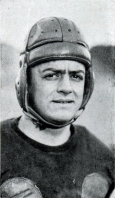
Like Jack Trice Stadium, Cincinnati’s Nippert Stadium is named in honor of a young man who died as a result of injuries sustained while playing this great game of football for his university. During the final game of the 1923 season, against intrastate rival Miami University, UC footballer James Nippert sustained, what appeared to be, a minor spike injury. One month later, the young man died from blood poisoning suspected to have been the result of infections received through chicken droppings from a chicken race held prior to the game in which James was injured. Nippert’s grandfather, James Gamble of Proctor and Gamble, donated a large sum of money to help with the completion of Cincinnati’s football stadium being built at that time. The structure, completed in 1924 was named the James Gamble Nippert Memorial Stadium.
Merlin Olsen Field at Romney Stadium – Utah State University. 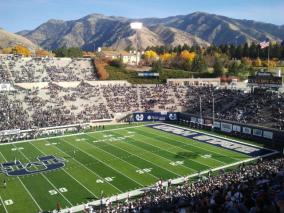
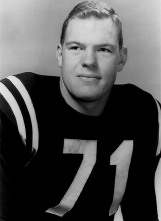
Romney Stadium is named after Utah State’s most successful football coach and former athletic director, Dick Romney. But, as of 2009, the official name of this structure became Merlin Olsen Field at Romney Stadium in honor of Utah State’s football player Merlin Olsen whose bust now resides in the College Football and NFL Halls of Fame. Olsen was a three-year lettermen playing defensive end at Utah State where he graduated in 1962. Olsen was a first round (3rd pick) draft choice of the Los Angeles Rams where he played for 15 years. Olsen also earned a Master’s degree from Utah State in Economics in 1971 and was later awarded an honorary doctorate degree in business. After his illustrious football career, Olsen continued to receive notoriety as a broadcaster and actor. Olsen is a favorite son of Utah, hailing from Ogden, and will always be remembered as one of Utah State’s greatest alumnus.
Honorable Mention
Michie Stadium – Army. Michie Statdium, on the campus of the U.S. Military Academy is named after Dennis Michie who was instrumental in starting the football program at the Academy. Michie, while still a cadet, helped organize manage and coach the first Army football team in 1890, but SOD could not find any evidence that he actually played on that team. Michie was killed in Cuba during the Spanish-American War six years after graduating from the Academy.
William-Brice Stadium – University of South Carolina. Technically, William-Brice Stadium is named after Martha William-Brice who left a large sum of money in her estate to USC for the renovation of their football stadium. It is mentioned here, however, because Martha William-Brice’s commitment to USC was in no small part the result of the fact that her late husband, Thomas Brice played football for USC from 1922 – 1924. William-Brice Stadium is one of only two FBS stadiums named after a woman – the other being Marshall University’s Joan C. Edwards Stadium.
Interesting Notes
Many FBS stadiums still in use today were originally constructed during or immediately after U.S. Wars and still a number of them still bear the name Memorial Stadium. The football stadiums at Clemson, Illinois, Indiana, Kansas, and Nebraska are all called Memorial Stadium; and, the stadium at Arkansas is known as War Memorial Stadium.
Interestingly enough, SOD also found two FBS football stadiums that are actually named after men who graduated from a rival school. Oregon’s Autzen Stadium is named after philanthropist Thomas Autzen who graduated from Oregon State University. Autzen’s foundation was a large donor to the stadium project, linked to the fact that his son attended Oregon in the late 1930’s and early 1940’s. And, Washington State University’s Martin Stadium is named after Washington University graduate, Clarence Martin who went on to become governor of the state of Washington. Clarence Martin’s son, Dan made a large donation in support of the stadium project and Dan’s widow made several donations throughout the years.
Disclaimer
SOD may have, of course, missed a few. There were a couple stadium names for which I could not find any information on the origin of the name. And, some of the coaches and athletic directors that stadiums are named after may also have played football there, but SOD could not find evidence of that fact.
There are also a number of football structures that have plazas or wings or other facilities somehow linked to the stadium that bear the name of a past player, but, SOD tried to keep his research centric to the playing field and stadium itself.
All in all, this was a fun project and SOD actually learned a little bit more about the history of this great game.
Jimmys and Joes
If you are a college football fan then you have probably heard the adage, “College football is not about the X’s and O’s; its all about the Jimmys and Joes”. Well, a lot of the Jimmys and Joes fell into place yesterday as National Signing Day 2015 finally arrived and recruits sent in their Letters of Intent (LOI) to the colleges and universities they will call home for the next 2 – 4 years, or so. Now, we will have to wait and see who actually got the right Jimmys and Joes.
In the final analyses, the number of stars the recruits bring with them won’t necessarily be the determining factor. Each class has only about 15 – 20 five star recruits – so, obviously, not enough to go around. Just how much separates a 4-star from a 5-star, or a 3 from a 4, is hard to say and is just a judgment call from self-labeled experts. Each individual coaching staff does their own evaluation and has their own inside-the-program ranking for each recruit. Also, coaches are looking beyond what recruit ranking sites look at and try to determine if the potential recruit is, what some coaches like to label, “our kinda guy” – an OKG.
The OKG is that young man who, above and beyond knowing how to play football and may already play in a system somewhat similar to the one the college employs, but also shares the values of the program; is willing to be coached; and has, as far as the coaching staff can determine, the mental and emotional maturity to fit right in and be a productive member of the football family – as a key contributor or otherwise.
Yes, the 4 and 5 star recruits garner the attention and receive the most applause and acclaim. And, more times than not, those 4 and 5 star recruits become the young men who form a solid foundation for elite football programs each year, but, SOD believes that what separates a good team from a great team are those who get the most out of their 2 and 3 star guys. Everybody fights hard to get those 4 and 5 star recruits and persuade them to commit, but the real science and the advantage gained is in finding those diamond in the rough guys, those 2s and 3s that you know you can develop into value-added contributors on your football team.
Chris Petersen (and his predecessors and successors) put together a nice little program at Boise State by finding those 2 and 3 star recruits who fit their system and were OKGs. Now Coach Petersen is going to try to do the same with, hopefully, 4 and 5 star recruits at Washington to regain some Husky glory.
Meanwhile, Boise State continues to excel with their OKGs. According to Rivals.com, the 2015 Boise State recruiting class comes in at #64. The Broncos class of ’14 was ranked #65; the ’13 class was #62; the ’12 class was #54 – and, yet, Boise State finished 2014 ranked #16 in the AP Poll and finished ranked #18 in 2012 – so, something is working with those Jimmys and Joes. This either suggests that there is something Xs and Os bring to the table or the real value of your coaching staff is their ability to get the most out of the Jimmys and Joes who do play for you.
So, as we tie a bow on the 2015 Recruiting class – with everyone but ‘Bama fans sick and tired of seeing the Crimson Tide ranked #1 again – coaching staffs are already knee deep into working on the 2016 class. Almost every coach interviewed yesterday on one of the numerous shows covering National Signing Day indicated that they already have recruit visits scheduled for the rest of this week to meet next years’ prospective recruits. Although it feels like Signing Day ends one cycle and starts another, don’t be fooled. Your top-of-the-heap programs are already well into the Class of 2016 – just look at those teams who finished ranked in the Top 5 this year.
According to ESPN’s Recruiting Nation,
• Alabama already has 3 verbal commitments for their 2016 class.
• Florida State has 7.
• USC has 3.
• Clemson has 7.
• Tennessee has 8.
It never ends.
The recruiting game is just one fun aspect of what separates college football from the NFL. And, it is what makes coaching this game a full-time job. The college football off-season is that proverbial duck on a pond (no, not an Oregon Duck), it looks smooth and easy on the surface, but there is a lot of energy and movement going on underneath.
Good luck to all you Jimmys and Joes; SOD hopes your college decisions work out well for you and your university.
